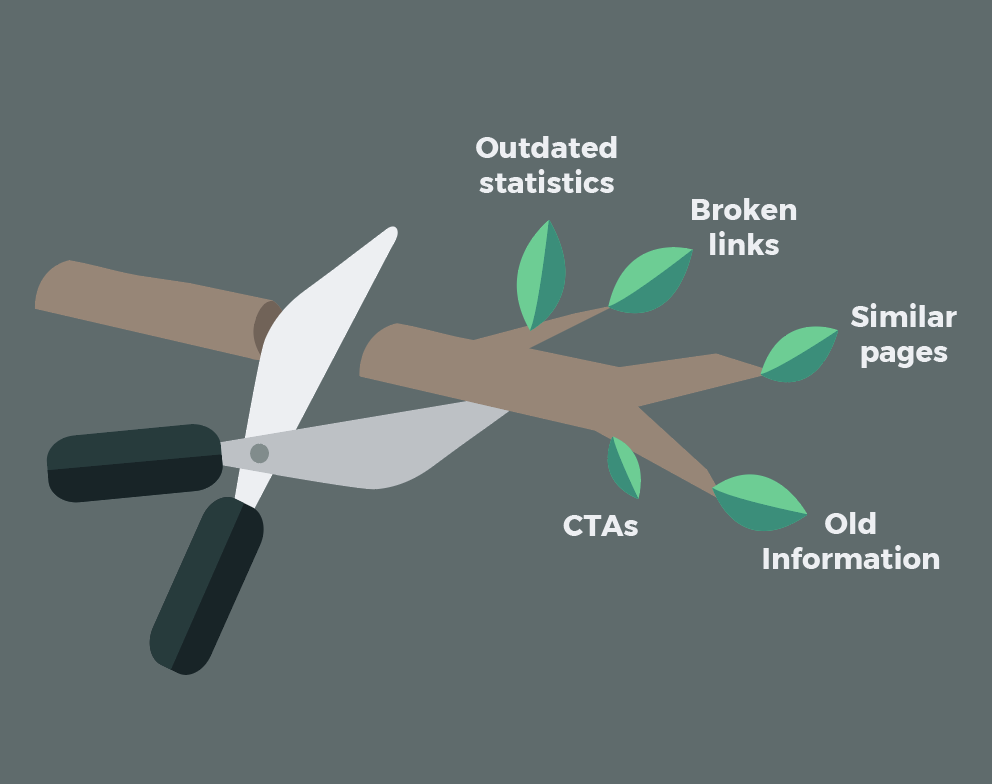Creating content is like penning a Hollywood blockbuster. You may pack the house on opening weekend, but by the second week, half your audience is already on to the next big thing.
By week three, most moviegoers can’t even remember that “blockbuster” movie’s name. Your best content probably sees a huge readership shortly after it’s published, but once the novelty wears off traffic slows to a steady trickle.
So you keep creating new content, week after week, constantly working to woo your readers back — and maybe addressing your overall content strategy. But what if you could future-proof your content and prevent that inevitable readership drop-off? What if you could create pages that actually drive more traffic over time?
You can’t predict which movies will turn into sleeper hits, but as a content marketer, you can make very conscious decisions to create pages to outlast the rest of your posts. Evergreen pages offer broad, timeless appeal that can drive continued traffic for years to come.
Including evergreen pages into your content mix can help drive steady traffic and boost your SEO. But great evergreen content can do even more than that. The best evergreen content is like that college textbook you’ve never been able to pack away — your readers will keep coming back to it. They’ll bookmark it. They’ll share it with their friends.
Evergreen Content Must Add Value
Great evergreen content should appeal to a broad base, helping it attract new readers, while also providing something to your regular visitors that they’re not getting anywhere else on your site. When designing evergreen content:
- Think basic
Evergreen content typically focuses on fundamental ideas within your topic or industry. If you’re marketing cell phones, an article on the top phones at the Mobile World Conference will get big hits for a few days, and then hardly be read again. A post on how to choose the right phone will have continued appeal long after it’s published. - Go in-depth
When your goal is timely news, there’s not much room to dig deeper. Use your evergreen pages to explore additional aspects of a topic and answer those burning questions your readers might have. - Educate your readers
How-to guides make great evergreen pages because people are always looking to learn new things. Not sure where to start? Look at some of your recent posts, and find a basic skill that would help your readers understand them. Or check the comments sections to see what questions your readers are asking. - Look past today
Trending topics are great for immediate clicks, but that record-shattering post you did on how to snag a Furby for Christmas probably hasn’t driven new traffic since 2012. On the other hand, a retrospective infographic covering 25 years of must-have toys could see renewed traffic every holiday season.
Add Some Action
Great evergreen content takes more time to develop than your average post but when done right, your time will be rewarded over and over again. Don’t just provide information. Take advantage of the longevity these pages will enjoy, and use them to drive consistent actions.
When creating an evergreen page, consider the following:
- What action do you want your readers to take?
Are you trying to drive traffic to your main website? Increase your social media shares? Or maybe you want them to call your office to schedule a consultation. This page will hopefully be active for a long, long time — use it as an effective marketing tool! - What other pages do you want them to read?
Now that you’ve got readers to your site, use this evergreen content to introduce them to your more regular postings. Link to top pages or categories. Use keywords to direct them to similar content. Include a list of your most recent articles in a sidebar. - Where will the page fit in your marketing funnel?
If you’re trying to woo first-time consumers, include plenty of links to more information. If these are qualified buyers, nudge them to your online store. For existing customers, provide easy access to your customer support page. Evergreen content should be about more than building your SEO; it should also be a tool for building a strong customer relationship.
Review and Refresh
I used to have a spruce tree in my backyard. It was lush, full, blooming with needles all around. But then a couple of nearby oaks outgrew the spruce and blocked its sunlight. Within a year, the spruce had lost half its needles. Even something evergreen requires regular maintenance to stay fresh and healthy.
No matter how hard you try to create that timeless quality in your writing, the reality is everything we do is a product of when we do it. Trends change. Technology changes. That spruce tree started to die because the circumstances it lived in changed. To save the tree, I pruned the nearby oaks. You can’t prune the world, but can you refresh your evergreen content to adapt to it.
To keep your content up-to-date, set a schedule for reviewing older posts. Look for:
- Outdated statistics
If you’re using stats from 2010, it’s time to pull some current numbers. - Broken links
Nothing says your content is stale like a bunch of broken links. Fortunately, there are plenty of free tools you can use to find them, like the Broken Link Checker from PowerMapper. - Similar pages
Older isn’t always bad in the eyes of Google, but if you’ve recently updated pages on a specific topic, your other pages on that same topic should be updated too — otherwise they might be deemed outdated and drop in SEO rankings. - Old information
Still advising your automobile enthusiasts that Hummer is the brand of the future? Probably time for an update! - CTAs
Chances are you don’t want visitors to check out your MySpace page anymore. Make sure you’re evergreen pages are asking visitors to take the action that will best serve your company today.
Don’t confuse refreshing content with repurposing content. Repurposing — or reusing your content in a different form — is a great content marketing strategy, but it won’t keep your original content from becoming outdated. You should review your content regularly and update whenever necessary, or all the variations in the world won’t save it.
Watch Out for Zombie Pages
Not all of your pages will or should become evergreen. Some topics have a short half-life. Even some of your evergreen pages may eventually be ready for the tree cutter.
Having old, outdated content — zombie pages — lingering on your website not only won’t improve your SEO, but it could be hurting your brand. If people are still downloading that white paper you wrote on why the iPhone will never be as powerful or secure for businesses as a BlackBerry, chances are it’s hurting your credibility.
To keep your site up-to-date, audit your pages regularly and remove or refresh those zombie pages. When you do, look for the following:
- Low- or non-performing pages
Using Google Analytics, track the views for every page of your website, paying particular attention to those at the bottom. Is it time to remove them? Or give them a refresh and try to push them back toward the top? - Irrelevant keywords
Trends, interests, and needs change. Review your keywords for topics of a bygone era, and remove or revamp those pages. - Short posts
Search engines are increasingly rewarding longer, more in-depth content, and some of your older, shorter pieces could be viewed less favorably. Unless they’re still driving huge traffic, expand these older pages or get rid of them. - Look for redundancies
If you’ve written about the same topic five different times, get rid of all but the most popular (or merge them into one). Using a tool like Screaming Frog, you can easily scan for duplications in headings, meta tags, and descriptions.
When you perform a website audit, keep in mind that old content isn’t always bad. The reason you create evergreen content is so it can age with your site. If your evergreen pages are still driving traffic — and triggering the actions you need — don’t mess with them. But if they’re just stumbling along, don’t be afraid to put them out of their misery — or, better yet, give them a refresh and put them back in action!



